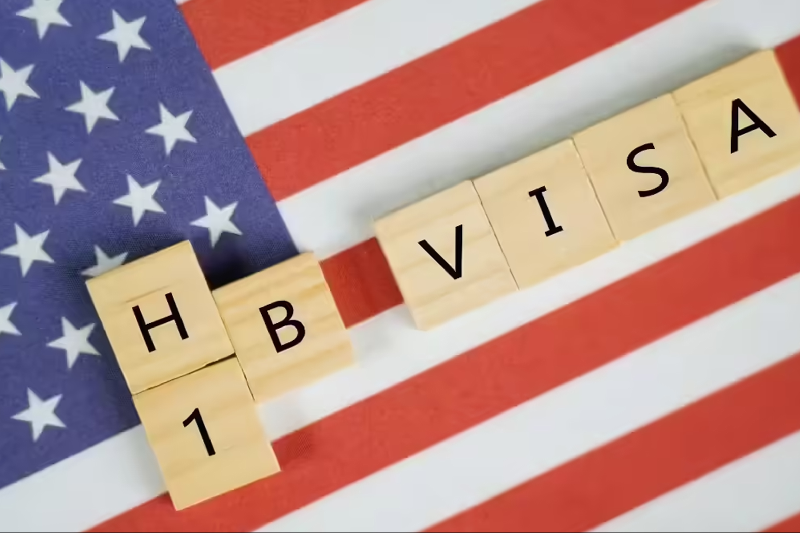
New Wage-Based H-1B Rule May Undercut Entry-Level International Students: What You Need to Know
The U.S. government’s proposed overhaul of the H-1B visa system could significantly reshape the career prospects of thousands of international students and recent graduates. The planned transition from a random lottery to a wage-based selection system would prioritize higher-paying jobs for visa approval—an approach that many experts warn could disadvantage entry-level workers, particularly international students entering the job market for the first time.
Here’s a breakdown of the proposed system, its implications, and what international students can do to adapt.
What Is the Proposed Wage-Based H-1B System?
Under the current H-1B system, all eligible candidates—regardless of experience level or salary—have an equal chance of being selected via a random lottery, as long as they meet the minimum eligibility criteria and apply during the designated period. This provides a level playing field for both seasoned professionals and recent graduates.
However, the proposed rule aims to scrap the lottery in favor of a wage-based ranking system. In this model, applicants offered higher salaries would receive priority in the H-1B selection process. The underlying goal, according to U.S. policymakers, is to protect domestic labor markets and ensure that H-1B visas go to roles deemed most valuable to the U.S. economy.
Why This Matters for Entry-Level International Students
While prioritizing salary might seem like a logical way to attract top talent, it presents clear challenges for new graduates—many of whom accept lower-paying roles as they begin their careers.
Here’s how the wage-based model could disadvantage international students:
- Lower Starting Salaries: Entry-level jobs across industries—including technology, education, and the arts—often offer modest starting packages. Under the new system, such salaries may not be competitive enough to secure an H-1B visa.
- Field-Specific Disparities: Graduates in non-STEM or social science disciplines tend to earn less initially, further reducing their chances under a salary-based system.
- Even STEM Graduates Affected: Though traditionally favored in the U.S. immigration process, even STEM graduates could be excluded if they enter budget-conscious startups or academic roles that don’t meet the proposed salary thresholds.
New Pressures for Students and Employers
The proposed change doesn’t just affect students—it also complicates hiring for small businesses, nonprofits, and startups, which may not have the resources to offer inflated wages for entry-level international hires.
Challenges include:
- Higher Salary Demands: Students will feel increasing pressure to negotiate higher pay packages, despite lacking the bargaining power or experience to do so.
- Reduced Sponsorship Opportunities: Employers unable to meet wage expectations may simply opt out of hiring international talent, leading to fewer H-1B applications overall.
- Decreased Employer Flexibility: Organizations may feel forced to choose between compliance and affordability, particularly in sectors where wages are constrained by grants, donations, or budget cycles.
Visa Alternatives Gaining Importance
As the H-1B route becomes more selective and salary-driven, international students must start considering alternative visa options, even if these come with their own limitations.
Key alternatives include:
- OPT and STEM OPT Extensions: Offer temporary work authorization post-graduation (up to 3 years for STEM fields), but are not long-term solutions.
- O-1 Visa: For individuals with extraordinary ability in their field, often requiring awards, published work, or international recognition.
- Employer-Sponsored Green Cards: Viable for high-skill roles but require long timelines and employer commitment.
- Migration to Other Countries: Countries like Canada, Australia, the UK, and parts of Europe offer clearer and more accessible post-study work pathways, drawing increasing interest from students disillusioned by U.S. visa hurdles.
How Universities and Support Networks Are Responding
U.S. universities are responding proactively to these looming changes. International student offices and career services are stepping up their efforts to help students adjust and prepare strategically.
Support includes:
- Workshops on Salary Negotiation and Career Strategy
- Visa and Immigration Guidance from Legal Experts
- Peer-to-Peer Networks and Mentorships
- Sector-Specific Job Fairs and Employer Outreach Programs
Meanwhile, student advocacy groups are actively lobbying for more balanced immigration policies that do not disadvantage fresh talent based on compensation alone.
What Students Should Do Now
As the policy debate continues, international students must take early, informed, and strategic action to stay ahead.
Practical steps include:
- Stay Updated: Regularly monitor announcements from USCIS, university advisors, and immigration attorneys.
- Specialize and Upskill: Focus on building niche or high-demand skill sets that command stronger salaries.
- Choose High-Paying Fields: Industries like technology, finance, engineering, and healthcare typically offer better salary prospects for H-1B selection.
- Network Intelligently: Build connections with alumni, mentors, and industry professionals to access hidden job markets and improve offer competitiveness.
- Understand Backup Options: Familiarize yourself with non-H-1B pathways, both within the U.S. and in alternative destinations abroad.
The Bottom Line
The proposed wage-based H-1B system represents a fundamental shift in U.S. immigration policy—one that may significantly disadvantage entry-level international students who do not meet elevated salary thresholds.
Even before formal implementation, the proposal is already influencing student decision-making, employer behavior, and the strategic advice offered by universities. For many, the once-straightforward path from graduation to employment in the U.S. is becoming increasingly complex and uncertain.
Still, with the right preparation, adaptability, and awareness of all available options, international students can navigate this changing landscape. Success will depend on proactive planning, resilience, and the ability to pivot quickly as immigration frameworks evolve.



